Wild wood
Across the country, the 1970s had been an era marked by wooden coasters doing their best impression of an earlier time. Though they grew taller and faster, rides from Kings Island’s Racer to Great America’s American Eagle altogether represented an era of out-and-back coaster delights. Often painted gleaming white, these installations were pure Americana; as essential to parks as the Arrow mine trains and Double Loops they served as classic counterparts to.
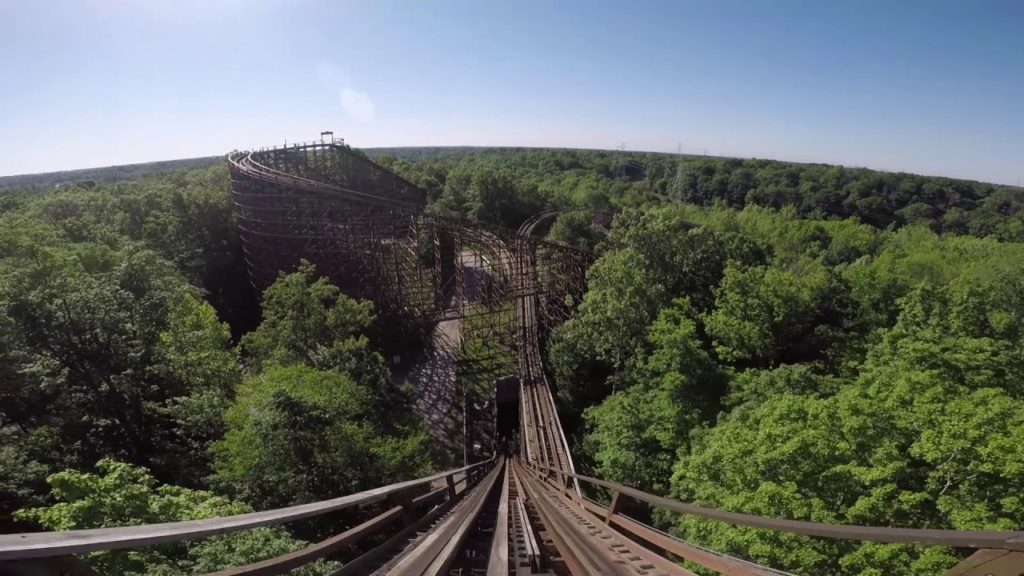
In 1979, Kings Island returned to the wooden coaster genre, eager to recapture the national profile that the Racer had awarded the park just seven years earlier. The result was a ride that could only be called The Beast – a totally custom, terrain-following wooden coaster that roared across 35 acres of hilly, wooded terrain outside of the park, nearly completely concealed beneath the treeline and hidden from queuing guests. With 7,361 feet of track and over four minutes of ride-time, The Beast was (and remains) the longest wooden roller coaster on Earth.
Though surely not the first custom, terrain following woodie, The Beast no doubt sparked a new era of wooden coasters, abandoning dainty white paint and chaser lights in favor of something very different. It makes sense! Surely by the ’80s, the distinction had been set that steel coasters were smooth and wooden coasters were not. So why not embrace it? Forget graceful, galloping “Racers” or patriotic, soaring “American Eagles”…

It’s no accident that wooden roller coasters of the ’80s had names like Grizzly (Kings Dominion and the Great Americas), Timber Wolf (World of Fun), Wild Beast (Canada’s Wonderland), Wolverine Wildcat (Michigan’s Adventure), Gwazi (Busch Gardens Tampa), Wildcat (Hersheypark), and Raging Wolf Bobs (Geauga Lake). As Arrow’s extreme multi-loopers became the new steel standard, wood coasters had found their equivalent niche: vicious and snarling creatures, embracing their more rough, rudimentary make-ups, departing from midways and heading toward the woods.
It’s important to contextualize the increasingly “wild” story of wooden coasters with the evolution of their counterpart. To jump from the ’70s to the ’90s is to see the steel coaster reinvented entirely. By the mid-’90s, Arrow’s loopers and mine trains looked (and felt) like relics of another time. Instead, new industry players like Intamin, B&M, and Premier had transformed the steel coaster into something much closer to its current form: an ever-evolving genre of taller, fastest, sleeker, smoother rides. Stand-up coasters, inverted coasters, LIM launches, cable lifts, inversions… anything was possible in steel.
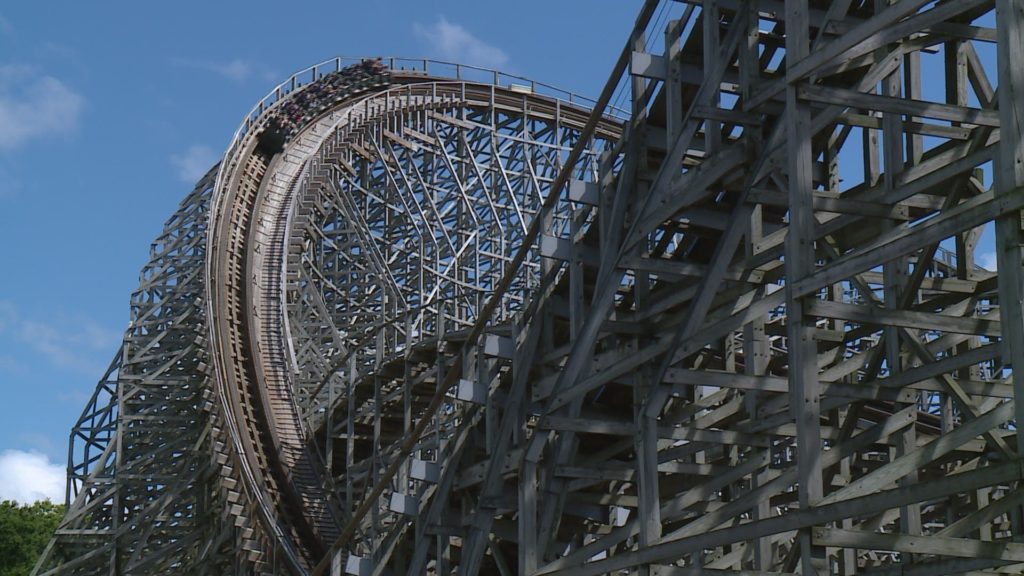
So it’s no surprise that wood coasters raced to grow in tandem. And in some cases, they probably grew too much. In an effort to keep wooden coasters as viable headliners, the ’90s introduced a generation of wooden giants notorious for aging poorly. Cedar Point’s Mean Streak. Darien Lake’s Predator. Magic Mountain’s Psyclone. Fiesta Texas’ Rattler. Kings Dominion’s Hurler. Discovery Kingdom’s Roar. Great America’s Viper. Knott’s GhostRider. Geauga Lake’s Villain. Michigan’s Adventure’s Shivering Timbers…
Given that so many of these ’90s-born wooden giants have either been demolished, converted to steel, or written off as unpopular liabilities “jackhammering” guests into oblivion, it seems that more wooden coasters of the ’70s still survive than of the ’90s. Without a doubt, that era of over-growth ended with a bang…
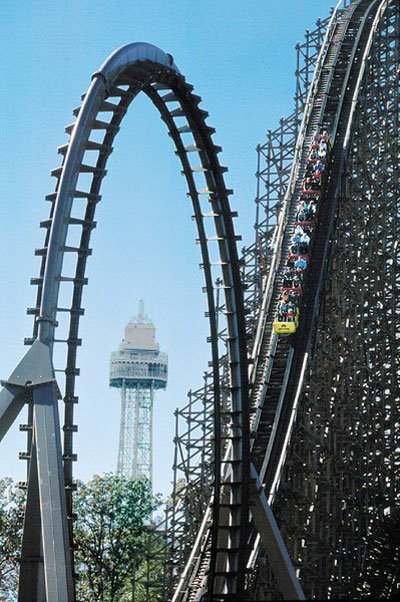
The very same summer that the steel coaster topped 300 feet with Intamin’s Modern Marvel: Millennium Force, Kings Island became home to a third landmark wooden ride – Son of Beast. Don’t let the name fool you. Son of Beast bested its parent in nearly all statistics as the tallest, fastest, steepest wooden roller coaster on Earth. (It was also the second-longest wooden roller coaster on Earth, purposefully leaving the top spot for its revered father.) Most notably, Son of Beast was also the only looping wooden roller coaster on the planet.
As we explored in our in-depth Lost Legends: Son of Beast entry, the ride really served to establish the practical limits of the “classic” wooden roller coaster… Notorious for being one of the most extraordinarily intense rides on the planet, Son of Beast was an incredibly aggressive, violent, and extreme coaster; a ride whose very name equates a case study in why no other wooden coaster before or since dared cross the 200 foot threshold. A logical, doomed conclusion of the “over-growth” of the wild wooden roller coaster through the ’80s and ’90s, Son of Beast proved that the wooden roller coaster simply had different limits than its steel sisters…
At least, until new 21st century innovations offered to change game…
Intamin’s answer
Son of Beast served as case study on the upper limits of the century-old standards of the wooden roller coaster… and on the power of deferred gratification. After all, just a year after the doomed ride’s debut, a whole new tool for wooden coasters entered the scene.

As with so many of the more progressive, experimental prototypes of the “Coaster Wars,” it came from Intamin. Already renowned for major advances in ride technology via Superman: The Escape (the first 100mph caster, powered by a cutting edge linear induction motor launch) and Millennium Force (the first gigacoaster, employing a prototype new cable-based lift mechanism versus the lift chains of old), Intamin seemed an unlikely contender to move “backwards” into the business of wood.
Still, the first of Intamin’s wooden roller coasters – Colossos – opened in Germany’s Heide Park in 2001. And with it, a ride experience no one who’d ridden a wooden roller coaster before would’ve recognized…
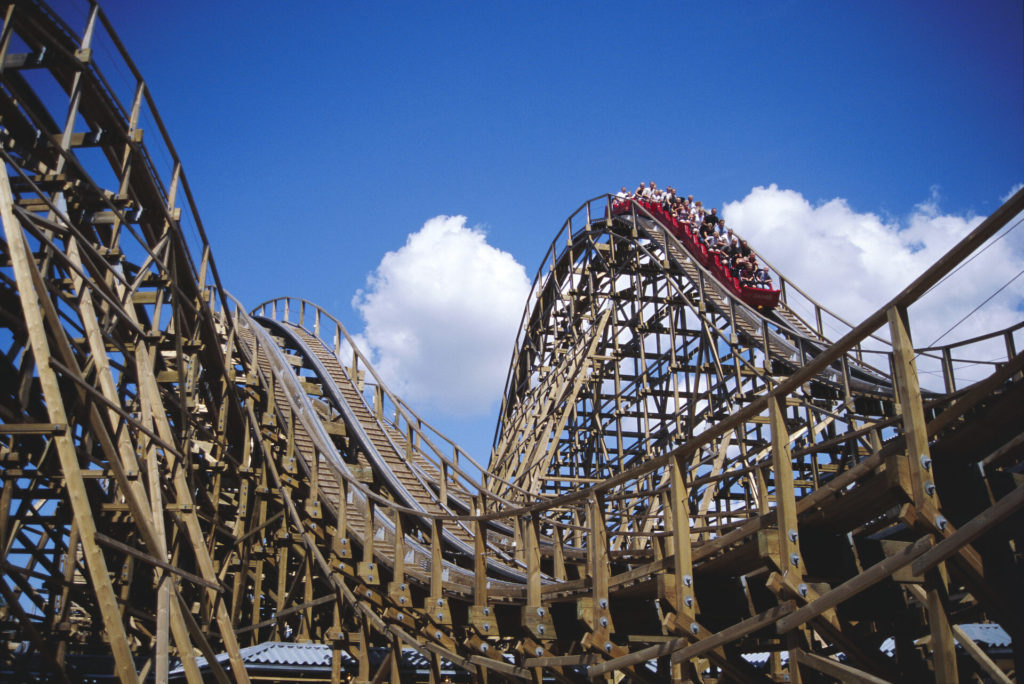
The reason was simple. Though Colossos may have looked like any other wooden roller coaster, Intamin had used the same, century-old ingredients to create something fundamentally new.
Though they’d spent decades getting bigger, stronger, and more intense, there’s no question that at their core, wooden roller coasters hadn’t really diverged far from the standards set by John Miller way back in 1919.
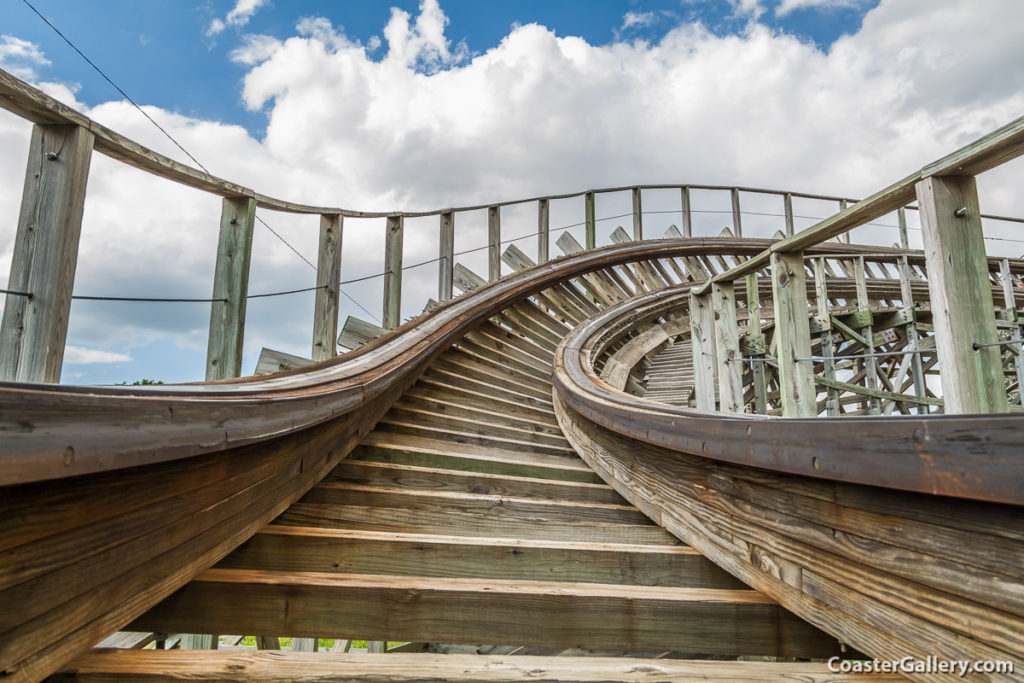
Whether in 1920 or in 2000, wooden roller coasters all started as piles of treated lumber, trucked to a cleared site. There, wood would be sawed on-site; hammered and bolted and built from the ground up. Atop these accumulated structures, wooden coaster track comes to life – made of tens of thousands of crossbars, and rails made of stacked lumber and thin strips of metal for wheels to run along…
These great structures are modern marvels; many delicate parts summing up to an unthinkably strong whole. But they’re also imperfect. Even when computer modeling allowed engineers to recognize where particular forces might require more support or flexibility, wooden roller coasters are inherently imprecise; sawed and hammered and assembled by hand. It’s that inherent imperfection that makes wooden roller coasters feel like wooden roller coasters – rumbling and jostling as they roar down the track.
So what happens if you remove the imperfections altogether?
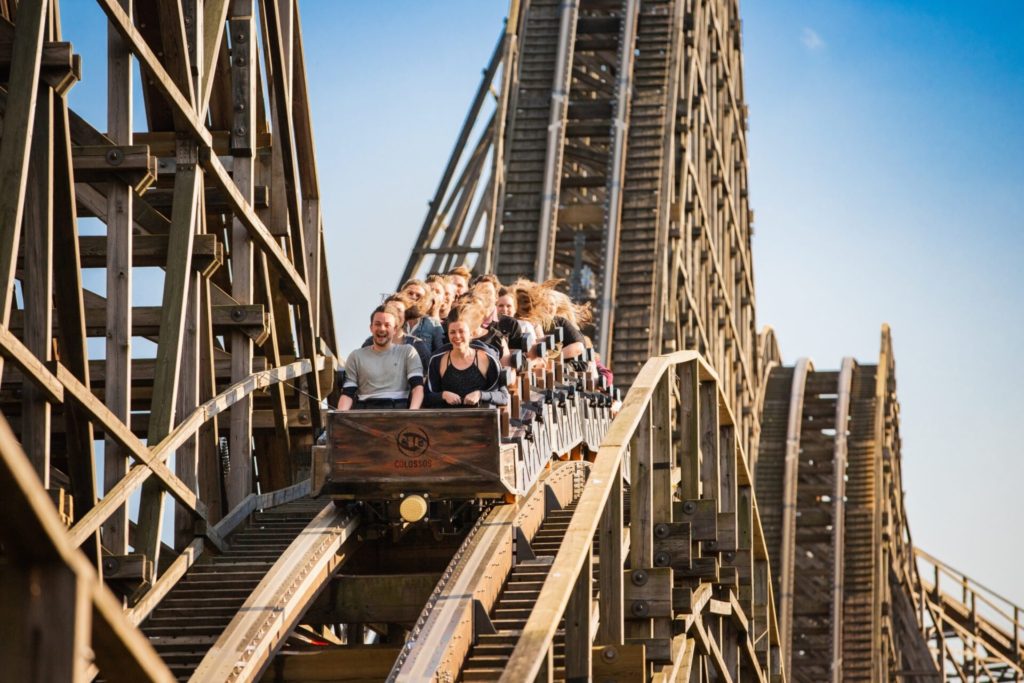
Intamin’s wooden roller coaster may have looked antique, but the technology behind it was all new. Prototyped via Germany’s Colossos, Intamin introduced the pre-fabricated wooden roller coaster. You won’t see the score marks of a saw at the end of its crossbars; no buttressed additions to its lattice of supports; no gaps between the layered timber of its track. Instead, Colossos was practically made in a laboratory.
Born of computer modeling, the timber made for Colossos was shipped to and treated in a factory. And there, its wooden pieces were literally cut and assembled with laser precision. Colossos arrived in Heide Park not as a pile of lumber, but as a finished product; pre-assembled, precision-fit pieces only in need of assembling. It’s no wonder fans took to describing the process as “plug-n-play.” Simplistic as it may sound, building Colossos was something like assembling a LEGO kit, merely snapping together pre-cut, pre-labeled sections and bolting them through pre-bored holes.
Standing 197 feet fall (just three feet short of becoming the world’s second wooden hypercoaster after Son of Beast), Colossos served not just as a landmark coaster, but as the unthinkable and indescribable first of something entirely new… a wooden roller coaster that felt like steel. Relentless, tear-jerking speed; incredible airtime; the kind of blissful, sleek, and powerful experience once reserved for steel coasters alone… right down to being the first wooden roller coaster with magnetic brakes at the ride’s end, bringing it to a smooth, comfortable finish.
It was something new… and something that could represent a major new weapon in the raging Coaster Wars back in the U.S. where, as part of a multi-year growth spurt, the once-demure Great Adventure had become a major battleground… Read on..


